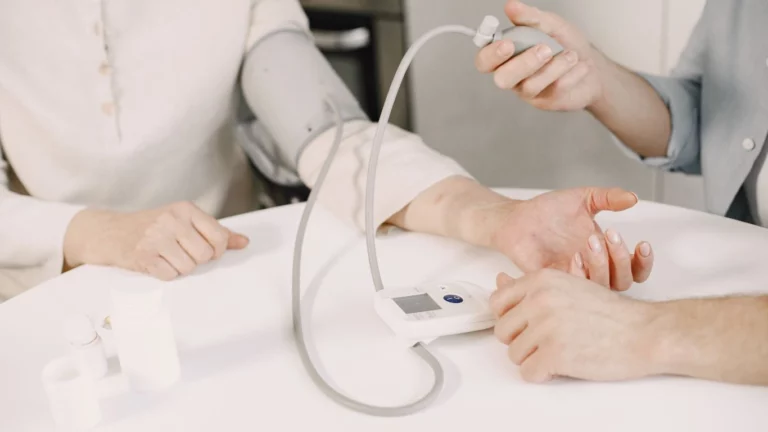How to Teach Kids About Asthma Safety 🫁: A Parent’s Guide to Protecting Their Health
Hey, if you’re reading this, chances are you’re either trying to figure out how to help your child with asthma or you’re just trying to be proactive and teach them the right things. Trust me, I get it! Having a kid with asthma can be a bit nerve-wracking, especially at first. I’ve been there—my little one was diagnosed a while ago, and honestly, it felt like a lot to take in. But the good news? With the right tools and a little patience, it’s totally doable to teach them about asthma and how to stay safe.

What is Asthma and Why Should Kids Learn About It?
So, asthma is basically when the airways in your child’s lungs get narrow, making it harder for them to breathe. It might sound a bit scary, but with the right knowledge, your kid can learn how to manage it. It’s all about giving them control over their condition and teaching them what to do if they start to feel unwell.
You don’t have to go into medical jargon, just keep it simple. My approach with my kid was: “Asthma is like having a storm in your chest. When you’re breathing, sometimes it can feel a bit tight like the wind’s blowing hard inside.” Pretty straightforward, right?

Step 1: Start with the Basics 🧑🏫
Start by explaining asthma in a way your child can understand. Kids often don’t get why they can’t just breathe like everyone else, so giving them a simple, relatable explanation is key.
Try something like, “You know how sometimes it’s hard to catch your breath after running around too much? Asthma makes it harder for you to breathe, even when you’re just sitting still sometimes.”
This way, they’re not overwhelmed, but they understand what’s going on with their body. It also helps take away the fear of something that might feel a little out of control.

Step 2: Teach Them How to Recognize Symptoms 👀
Kids need to know when something’s up, so they can tell you or take action. My little one, for example, didn’t always recognize when she was starting to feel short of breath. I had to teach her the signs: a little wheezing, tight chest, or a dry cough that wouldn’t go away.
Once she learned what to look for, it was easier for her to come to me and say, “Hey, I’m feeling a little wheezy.” That way, we could handle it before things got worse.
Step 3: Make Inhaler Time Fun 💊
Okay, inhalers can seem a little scary at first. I know I was worried about how my daughter would react to using it, but here’s a trick—make it a part of the routine, like brushing teeth. I told her, “It’s like giving your lungs a superhero boost!” That turned it into something positive instead of a chore.
Even now, she’s pretty good about using it before and after playing, or when she starts feeling a little tight in the chest. We even turned her inhaler into a bit of a game. It sounds goofy, but it works.
Step 4: Teach Them to Avoid Triggers 🌳
Asthma’s not just about using medication; it’s also about learning what triggers your child’s symptoms. For us, it’s dust and pollen (hello, spring allergies!). We’ve gotten pretty good at keeping our home allergy-free—air purifiers are a lifesaver, especially in the bedroom. And I’m constantly reminding her to wash her hands when she comes inside, especially after being outside.
If your kid’s asthma is triggered by exercise, you can work with them to find ways to manage it, like taking breaks or using the inhaler beforehand. It’s about making it all part of the routine.
Troubleshooting Common Issues ⚙️
There are always a few bumps in the road. I’ve run into some common challenges myself, and here’s what worked for me:
Problem: My kid’s not using their inhaler properly.
Solution: This one’s tough, but I found that role-playing helped. We would pretend her doll needed the inhaler too, and she’d show the doll how to use it. Sounds a little silly, but it worked!
Problem: Asthma attacks keep happening, even though we’re doing everything right.
Solution: Keep an open line with your child’s doctor. I’ve found that making sure her asthma action plan is clear and up-to-date really helps. And just being aware of the little things—like changes in weather—can help prevent issues from sneaking up.
Case Studies / Success Stories 💬
It’s always nice to hear other parents’ stories, so here are a couple of mine (and a few I’ve come across) that might help you feel better about your own journey:
Case 1 – Emily’s Story:
Emily’s parents noticed her asthma was getting in the way of her soccer games. They started having her use her inhaler before every game and taught her how to recognize when she was getting winded. It didn’t take long before she could play a full game without worrying about her asthma. Now, she’s doing better than ever, and she’s learned how to listen to her body.
Case 2 – Leo’s Experience:
Leo’s asthma used to get triggered during gym class. He was self-conscious about needing to stop, but after his mom worked with the school to make accommodations, Leo learned how to take breaks when needed. He now has full confidence in participating, and his teachers are supportive.
Key Takeaways 📝
- Keep it simple—explain asthma in a way your child can understand.
- Teach them to recognize symptoms early on.
- Make using an inhaler feel like part of the routine, not a punishment.
- Encourage them to be aware of triggers and adapt their lifestyle accordingly.
- Always stay open with the doctor and keep the action plan updated.
FAQs ❓
Q: What’s the best way to remind my kid to use their inhaler?
A: Try to make it a habit—before school, before exercise, and after being outside. You can even reward them for doing it without a fuss!
Q: How can I tell if my kid’s asthma is getting worse?
A: If you notice more coughing, wheezing, or shortness of breath, it might be time to revisit their asthma action plan with the doctor.
Disclaimer ⚠️
Just a heads up, this advice is based on my personal experience and general tips, but it’s always best to check in with your healthcare provider for specific medical advice.
Call to Action 📲
If you found this helpful, share it with another parent or sign up for our newsletter. We’re all in this together, and I’m always sharing tips on keeping your kids healthy and happy. Let’s keep the conversation going!

Bianca Nala is a compassionate Nurse Practitioner with a strong background in primary and respiratory care. As a health writer for Healthusias.com, she combines her clinical expertise with a talent for clear, relatable storytelling to help readers better understand their health. Bianca focuses on topics like asthma, COPD, chronic cough, and overall lung health, aiming to simplify complex medical topics without losing accuracy. Whether she’s treating patients or writing articles, Bianca is driven by a single goal: making quality healthcare knowledge accessible to everyone.






